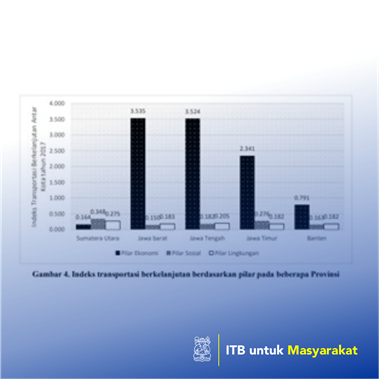

Russ Bona Frazila
This planning, pioneered by OECD countries, defines sustainable transport as transport which contributes positively to the economic, and social condition of the cities without sacrificing human health and environment (World Council for Sustainable Development, 2001). Integrating three aspects of economic, social, and environment together. The purpose of this studies is to develop sustainable mobility index in Indonesia context. We developed the index to be comprehensive enough, yet the data requirements can be easily obtained from government official data. Once having set the index, it is important that the developed index can be implement to different cities in the region. Lopez-Lambas et al., (2010) stated that the creation of a common and homogenous set of indicators which allow a consistent measurement of sustainable cities is important. Those authors also emphasize the proper benchmarking technique that allow local authorities to learn from each other is equally important. Benchmark can be defined as a method to compare the performance of similar organizations in order to learn from the best performers. Thus, the second purpose of this paper is to shows that the proposed index can be used to evaluate different cities context in Indonesia in term of their performance in urban transport sustainability.
Penerapan Karya Tulis
In many cities and countries, efficient movements for people and goods are required to support the economy. This case is specifically true when we are talking about urban transportation. Urban transportation planning is a complex subject since it is composed by a massive network of systems and their interactions. Current urban transportation planning includes not only the provision and management of actual infrastructure to move people and goods, but also people interest and demand. Traditional urban transportation planning process, however, is quite often only concentrated in just a few parts of this complex system. The most notably is the prevalence of automobile-oriented planning in many cities particularly in developing countries (GIZ SUTP, 2010). Those problems result in the new paradigm of transport planning known as sustainable mobility planning.